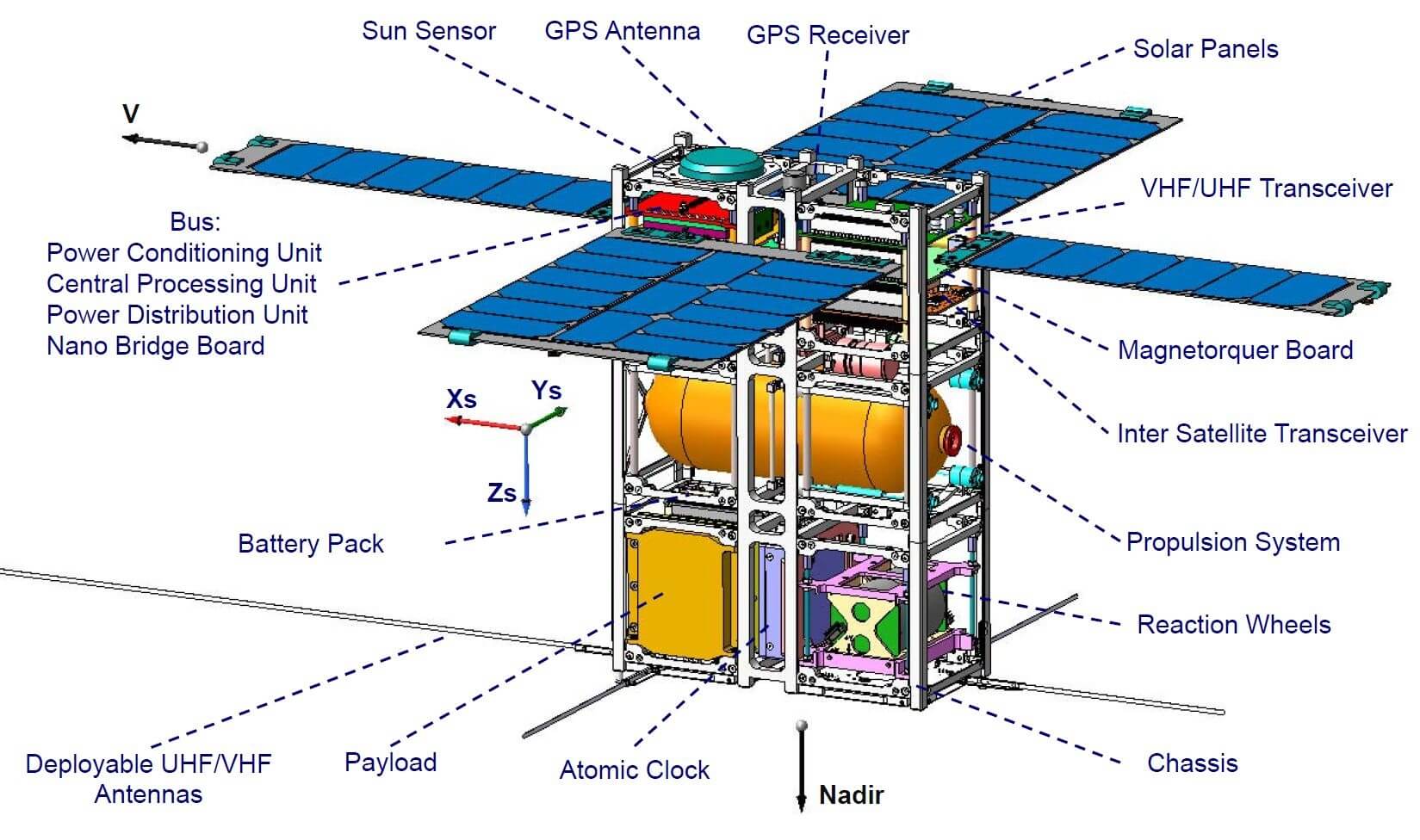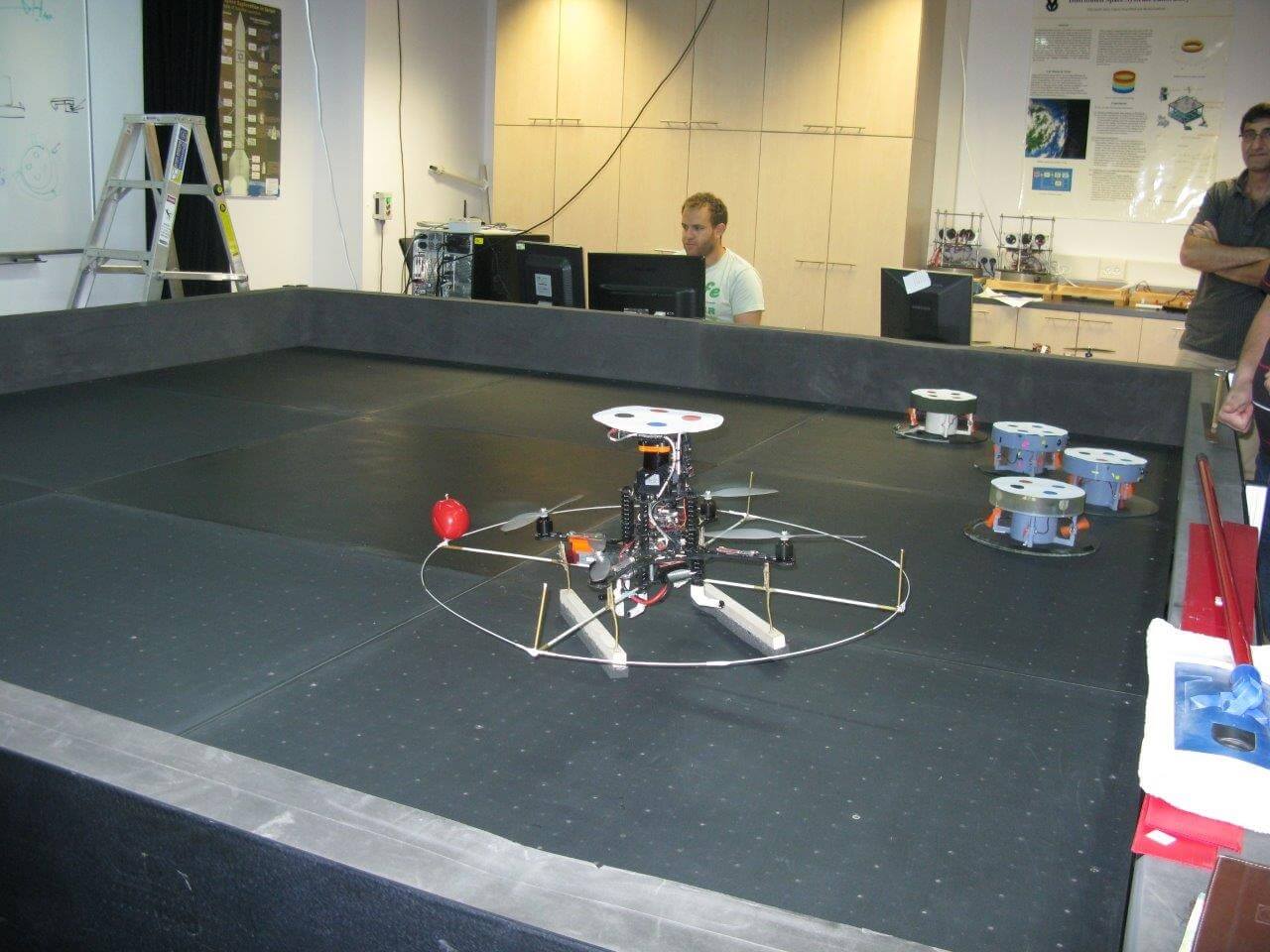The "Samson" project, which is being conducted at the Asher Institute for Space Research at the Technion, was presented to the heads of the Israeli space industry

Last week, the PDR (preliminary design presentation) phase of the "Samson" satellite project took place at the Asher Space Research Institute. The meeting was attended by leading experts from the field, including representatives of the Israel Space Agency, the Aerospace Industry (Space Factory), Elta and Rafael.
As part of the "Samson" project, the first "flock of satellites" in the history of space will be launched within a few years. This means: first autonomous cluster flight of three satellites. The term 'autonomous' means that the satellites will function and communicate among themselves, and will know how to manage a coordinated structure even in the absence of guidance from Earth. The project is led by Professor Finny Gurfil from the Laboratory for Distributed Space Systems, Asher Institute for Space Research and the Faculty of Aeronautics and Space Engineering at the Technion.

"Beyond the problems associated with the actual cluster flight, even at the level of the individual satellite there are significant innovations here. First of all, the satellites will be driven by a propulsion system developed at Raphael and the Technion especially for the project. In addition, each satellite will carry an atomic clock. We want the satellites to be light, so each one will contain only 300 grams of fuel, which requires us to have very economical flight systems and trajectory management strategies. There are many challenges here, including the large amplitude between proximity and distance between the satellites - excessive proximity may cause a collision, and excessive distance may result in loss of satellite communication. It should be understood that these new aspects constitute a real breakthrough in space engineering technologies."
The initial goal of the experiment is to prove the possibility of a long-term structure flight (at least one year) in space. Another goal is to examine the possibility of locating the exact location of transmissions originating from the Earth, by analyzing the information received by the three satellites at the same time. A possible application of this innovative technique is locating people in distress.
The mechanical design of the satellites was carried out by Dr. Vladimir Labanov from the Institute for Space Research at the Technion, and within the framework of it the main mechanical characteristics of each satellite were determined. The satellites will carry a space computer whose processor is based on the development of Professor Ran Ginosar from the Faculty of Electrical Engineering at the Technion. In addition, an initial version of the satellite software was written by Margarita Shamis from the Space Research Institute at the Technion, under the guidance of Dr. Raz Tamir from the Aerospace Industry. Yaakov Hershkowitz from Rafael directed the student project, in the framework of which various analyzes were performed for the project, and he manages the development of the propulsion system of the satellite at Rafael. The planning of the electronic and communication systems was managed by Hovik Aglarian, chief electronic systems engineer at the Laboratory for Distributed Space Systems, in collaboration with the Communication Laboratory of the Faculty of Electrical Engineering at the Technion.
In the pictures:

5 תגובות
Explanation of Orit's email:
I haven't had an orgasm in a long time. I am frustrated sexually, personally, and professionally, and all I have to do is write ridiculous comments on this site.
First of all good luck! I guess there is still a long way to go.
Orit!
1. I didn't understand the sentence "will cross the speed of light propagation" and go back in time. As far as I understand, it is not possible to exceed the speed of light.
2. Moving to a cluster flight, it is not clear whether the satellite will communicate with another party in order to receive a reference point on its location.
3. It is not clear what calculation problems the algorithm is supposed to deal with and how it differs from any GPS system that receives several satellites and is able to calculate its location.
The explanation of the picture that is missing above:
The propellers in the picture will take the satellite to an altitude of a kilometer and the rest of the 599 km will be carried out by the world's first fusion engine (which is not in the picture (in development)) then the super space engine, which is also not in the picture, will be activated and will accelerate the satellite, which is also not in the picture, to the appropriate speed for starting the first super light engine He doesn't appear in the picture either
As soon as the light super engine (which does not appear in the picture) will be activated, the satellite, which also does not appear in the picture, will cross the speed of the propagation of light and go back in time and throw the pod with the propellers (which does appear in the picture) exactly in the center of the table between the 4 circles that do appear in the picture.
Because of the super effect, a person watching from the side will only see a table with a satellite with 4 propellers
This refers to satellites that are at distances of several hundred meters to approximately 200 km for the entire time of their operation in space, that is, they form a cluster in space during their flight, and this is different from a structure flight, which requires a tight and defined geometry of the relative distances between the satellites.
I didn't understand what a cluster flight was.
Maybe they are regularly in orbits close to each other?, maybe launched in a cluster and then in different orbits?. Maybe at different points on the same route? Thanks for the clarification.